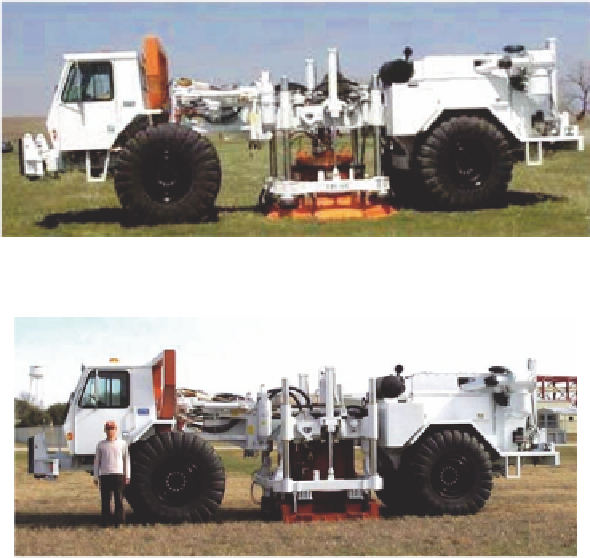Geoscience Reference
In-Depth Information
Fig. 5.19. UTexas T-Rex (tri-axial) vibroseis
Fig. 5.20. Liquidator (lowfrequency) vibroseis
3.2.5. Representative collaborative research project
Acollaborativeproject(Figure5.21)ledbyProfessorSharonWood(U.Texas)addressed
the important topic of improved knowledge of soil-foundation-structureinteraction
(SFSI). It also provided an ideal opportunity for demonstrating and challenging the new
NEESmodelforconductingresearch.Theprototypestructureselectedforinvestigationis
acontinuousbridgestructure.Thedynamicresponseofthisstructureisinfluencedbythe
ground motion and the nonlinear characteristics of the soil, foundation, and superstruc-
ture. It is impossible to determine which will control the system response a priori. It is
alsoimpossibletotestasinglephysicalmodeloftheprototypestructureandreproduceall
keyaspectsofthesystem.Therefore,aseriesoffourcomplementaryphysicalmodelsare
to be tested at four different sites: (1) centrifuge tests of individual bridge bents to eval-
uate the nonlinear response of the soil and foundation system (http://nees.ucdavis.edu),
(2)dynamic field testsofindividual bents usingmobileshakers (Figure5.22) toevaluate
the response of the soil, foundation, and structure (http://nees.utexas.edu), (3) shaking
table tests of a three-span model to evaluate the nonlinear response of the superstruc-
ture subjected to bi-directional, incoherent support motion (http://nees.unr.edu), and
(4) laboratory tests of large-scale individual columns to evaluate strength degradation in
flexure and shear (Purdue University).

